|
Suriname has surpassed all of our expectations. In fact,
Suriname could be the best country we have ever been to. Before we arrived we had
met only a handful of people that had
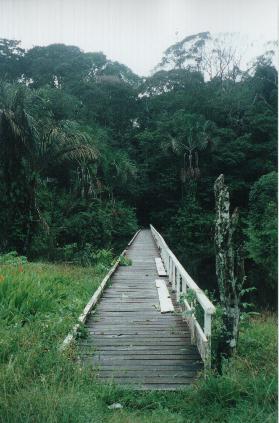 been here. And our internet searches for
information on Suriname produced little. been here. And our internet searches for
information on Suriname produced little.
Well, Suriname turns out to be quite a place!!
It's Dutch heritage has contributed much to it's culture, but it is the amazing
ethnic variety that really makes the country special. There is an incredible mix of
cultures, everything from Javanese to India to Brazilian. There are many different
traditions and religions living in what looks like harmony. In fact, in the middle
of Paramaribo there is a mosque standing right beside a Jewish synagogue! I'm sure
there are not many places in the world where that can happen in peace.
The People
If you look around in downtown Paramaribo, it is not strange to see 4 or maybe 5
people all with different ethnic backgrounds. They normally speak their native language
(from their homeland), Dutch, English and also the slang or street language called Sranan
Tongo or Taki Taki. People are generally very friendly and always willing to lend a
hand. Asking for directions in the downtown area, often brings a crowd of people all
trying to help out.
The Weather
In Suriname it is hot and humid. The average temperature is about 28 C. They
do have rainy and dry seasons, but we have yet to find someone who knows when they start
and end. Since we have arrived it has been about 50% rain and 50% sun. The
only problem with this weather is the insects. If your visiting, bring plenty of bug
spray and long sleeves for the evenings. The interior of the country is particularly
bad as there is malaria in parts so precautions not to get bitten should be taken.
You should also
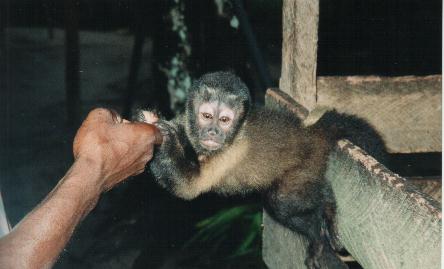 pick up some anti-malaria pills from the health department (distributed
free). pick up some anti-malaria pills from the health department (distributed
free).
The Food
One of the advantages of this rich diversity is
the cuisine. For each culture there are many restaurants available all over the
city. Most are run by families and have authentic style food. The great part
is how incredibly inexpensive meals are. A seafood platter with shrimp and white
fish will set you back $4 at an expensive restaurant. The average meal with beer is
about $4. It is cheaper if you go to small take-out shops. The local beer
Parbo is also cheap at
$1.50 for a 1.5 liter bottle.
The Money
The Suriname guilder is the currency used in Suriname. Unfortunately for the
locals the currency is quite unstable and its average exchange in early year 2000 was 1400
SG  to each US $1. They also take US dollars happily. Bring all the
cash you think you will need, because only travel agents and hotels take credit
cards and there are no bank machines. The nearest bank machine is a three hour
ferry, bus, and canoe ride over to St. Laurent, French Guyana. Pick up a couple
croissants and some good French wine while you're there to reward yourself (we did!). to each US $1. They also take US dollars happily. Bring all the
cash you think you will need, because only travel agents and hotels take credit
cards and there are no bank machines. The nearest bank machine is a three hour
ferry, bus, and canoe ride over to St. Laurent, French Guyana. Pick up a couple
croissants and some good French wine while you're there to reward yourself (we did!).
The Interior
If you want to see the best part of Suriname, go
to the interior. Unfortunately, (or fortunately, depending how you look at it) it is
not that easy to get there. There are only a few main roads and they are treacherous
and slow going. The only advantage of this slow pace is it makes it easier to spot
monkeys along the way, which are plentiful.
We were fortunate enough to make four trips into
the interior, all incredibly fascinating and diverse. For three of the trips we went
with a superb local tour company called Sun and Forest Tours. Have a look at their
website at www.surinamesunforest.com for
some great information and photos of Suriname as well as their range of tours to the
interior. The places we went to were as follows.
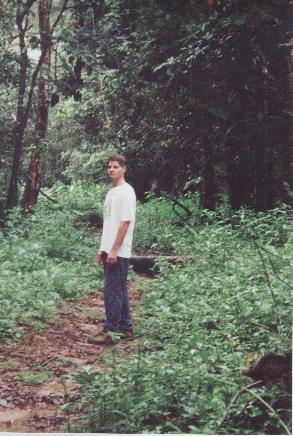 Sabana Park, Berlijn, Johensavanne, Blakawatra Sabana Park, Berlijn, Johensavanne, Blakawatra
This is one of the easiest trips to the interior
and probably the first one you should take. If you find this one to be really
roughing it you should be cautious going any further into the interior as it only gets
wilder. These are actually the places the locals go on the weekends as they are
accessible by car and not too far from Paramaribo.
Sabana Park is a local campground which looks
like it has seen better days as the jungle seems to be taking over quickly. There is
a lovely creek flowing through as well as three cottages available for rent (see www.surinamesunforest.com).
Berlijin is a small "tourist" town
though when we went there were no tourists (or anybody, for that matter) in sight!
There is a small river flowing through with a charming bridge which leads into a hiking
trail through the jungle. There is also some rental houses here...if you dare.
Johannavane has a very interesting story.
What you see now is the ruins of an old Jewish synagogue and a cemetery. What you
would have seen three hundred years ago is a thriving Jewish settlement of several
thousand inhabitants and the hub of civilization in Suriname at the time.
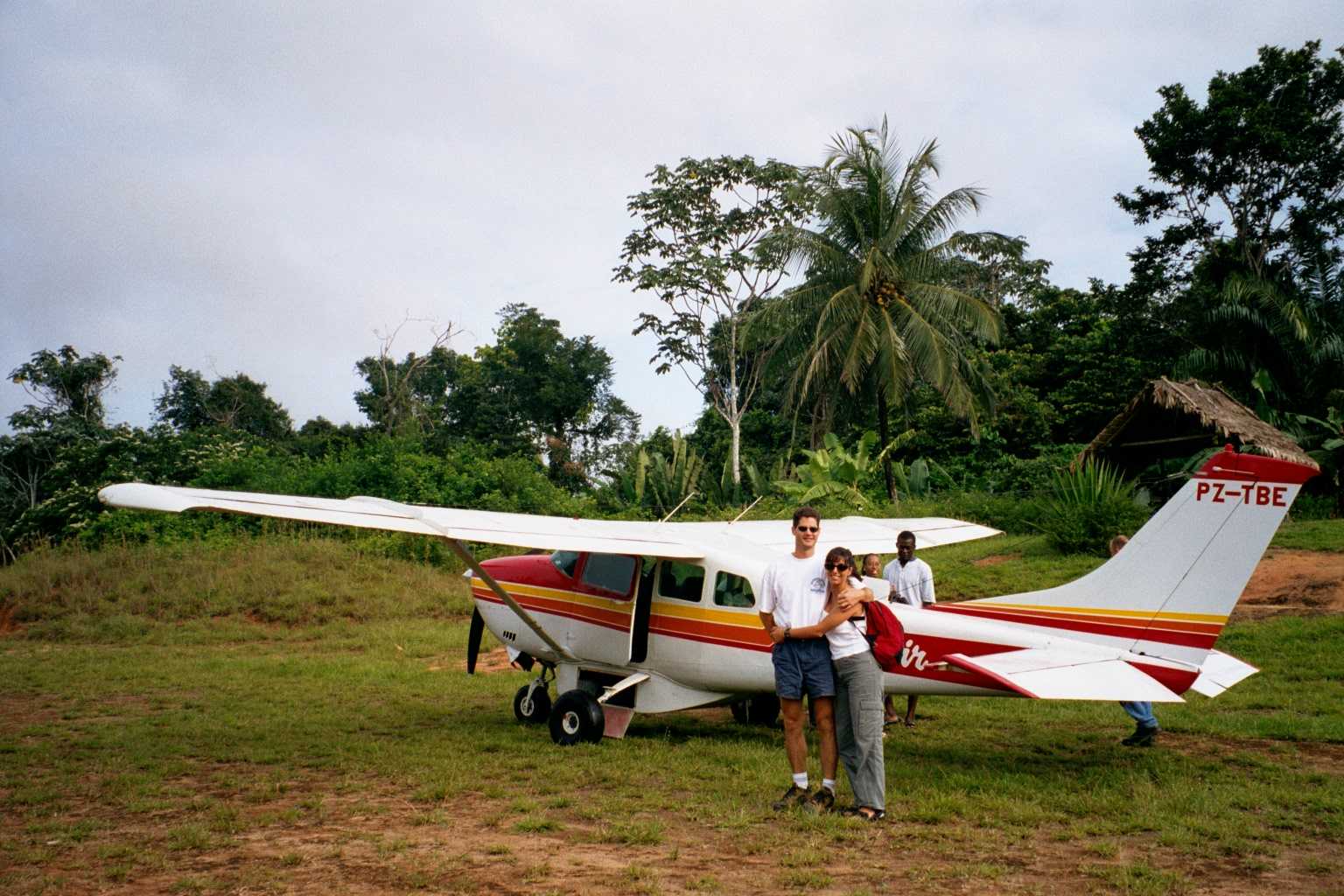 Unfortunately this town was completely wiped out by a fire and the surviving Jews moved to
the now capital Paramaribo. Unfortunately this town was completely wiped out by a fire and the surviving Jews moved to
the now capital Paramaribo.
Blakawatra is the gem of the trip. It is a
small, tranquil campground in the jungle with a beautiful, black creek running through it.
The water is safe to swim in and apparently very good for your skin. There is
a nice couple there who sort of maintain the place and have a cute little monkey for a
pet.
Raleighfallen, Voltzberg
Here's your choice. You can spend anywhere
between 6 hours and two days, depending on the season, getting there by land. Or you
can charter a plane and be there in less than an hour. We took the easy way out and
flew but since we only had three days it was the best option.
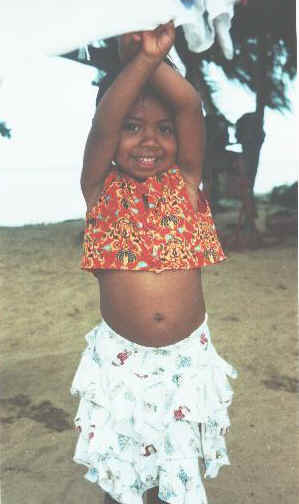 Raleighfallen is a series of rapids along the
Coppename river. There is not actually a village there but the Surinamese Eco
Tourism organisation STINASU has built a tourist camp on an island in the middle of the
river. It is located in a gigantic nature reserve called the Central Suriname Nature
Reserve. Just about everything that is rare in the Amazon basin can be found within
this nature reserve. This includes over 350 types of birds, hundreds of fish
species, and eight types of primates including the elusive Olsonbeast, known for it's
extraordinary beer drinking abilities. Raleighfallen is a series of rapids along the
Coppename river. There is not actually a village there but the Surinamese Eco
Tourism organisation STINASU has built a tourist camp on an island in the middle of the
river. It is located in a gigantic nature reserve called the Central Suriname Nature
Reserve. Just about everything that is rare in the Amazon basin can be found within
this nature reserve. This includes over 350 types of birds, hundreds of fish
species, and eight types of primates including the elusive Olsonbeast, known for it's
extraordinary beer drinking abilities.
We took a full day hike through the jungle to
Voltzberg which is a granite mountain in the middle of the jungle and really an amazing
site! It is around 800 feet high and the hike up takes about half an hour, which is
not as easy as it sounds after having to walk for two hours through thick, humid jungle to
get there. But once on top the view is well worth the pain. We were lucky
enough to hear at least three different troupes of Howler monkeys making their eerie
cries. Our tour guide Marcel (The Monkey Guy) had been a primate
researcher in the area for several years and spotted for us four
different species of monkeys along the way high in the trees
above us. Due to the amazing growth of roots and various
other things to trip on, our eyes were glued to the trail the
entire way so we needed somebody to spot the monkeys for us.
Our other tour guide
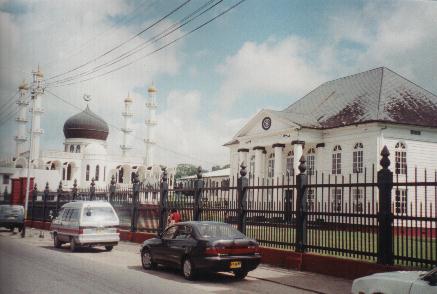 Ruth
had an expansive knowledge of jungle flora and fauna and was
able to answer all the questions we had. Ruth
had an expansive knowledge of jungle flora and fauna and was
able to answer all the questions we had.
The best part of the trip for me was fishing
with the local Maroons who were living and working at the camp. Fishing for
piranhas! Piranhas are rather hard to come by in Canada so this was a real treat for
me. It seemed strange to be able to go swimming freely in the river then the next
moment hang a big hunk of chicken fat on a j-hook and haul out hungry piranhas.
If you are a nature lover, this will be one of
the best trips of your life. On the other hand if you hate bugs, are scared of
germs, and swimming with piranhas is not your idea of adventure you better find something
else.
 Jaw Jaw, Upper Suriname River Jaw Jaw, Upper Suriname River
This trip will introduce you to the Maroon way
of life. The Maroons are the descendants of the runaway African slaves originally
brought over to work on the plantations owned by the Dutch colonists. There are many
Maroon villages in Suriname, but mainly on the east side of the country. We were told that
the reason that so many settled on the east is that they were hoping to get closer to
their homeland.
They have amazingly managed to preserve much of their traditional way of life.
With the exception of the outboard motors and a few modern clothes, not much has
changed. The men hunt and fish for food and the women cook, clean and plant vegetable
gardens. The riverside is a common place for many of the settlements as they use the
river for bathing and washing clothes and dishes. There simple way of life is a far
cry from the amenities we are use to, but the smile on their faces makes you wonder who
has the better life!! Truly a fascinating place and people.
Galibi Nature Reserve
Click
here for a special page on Galibi
|
